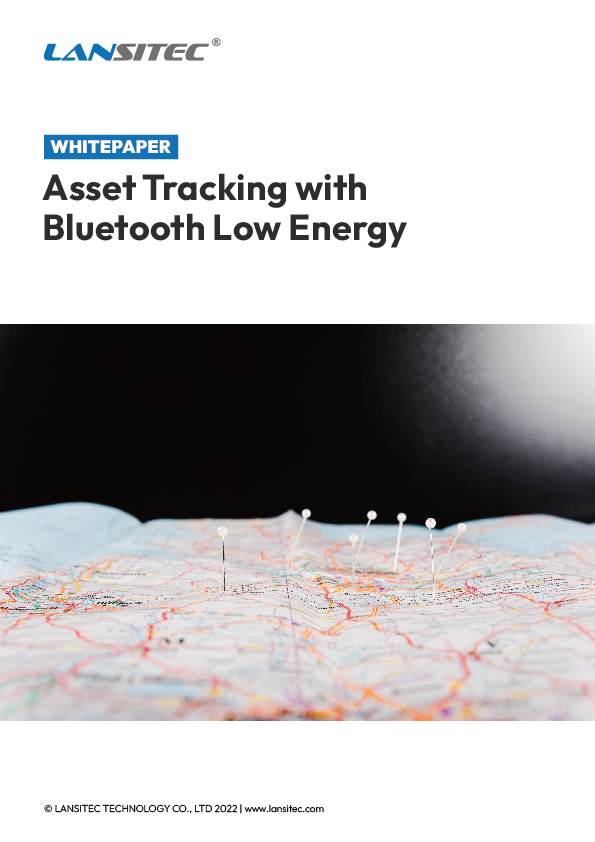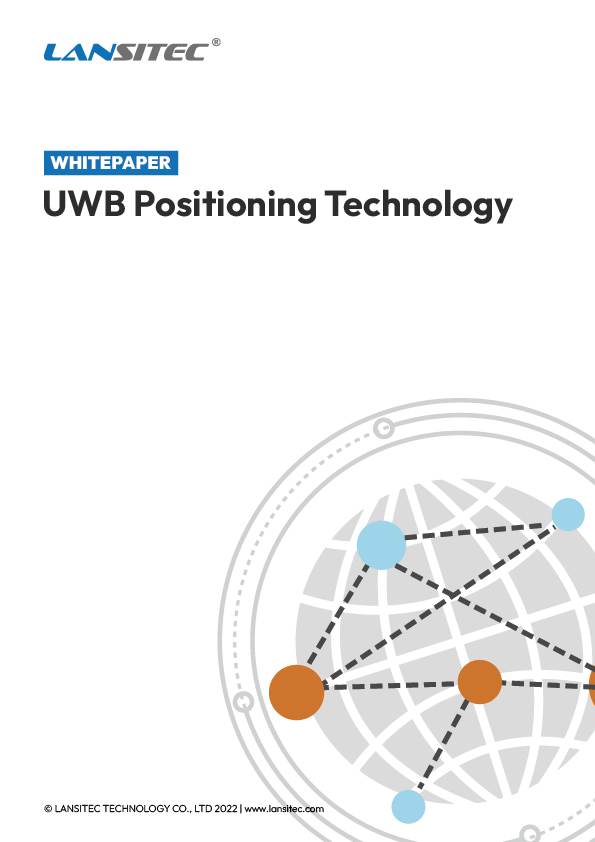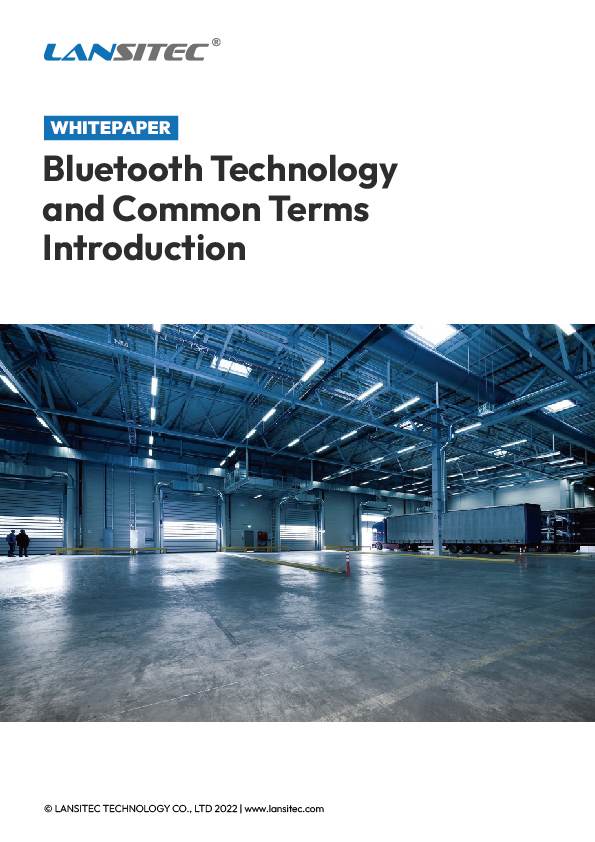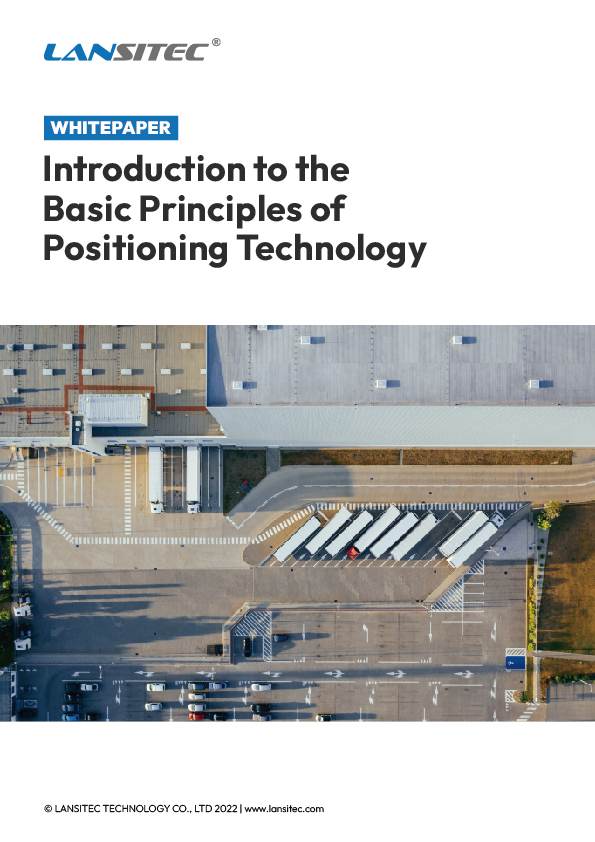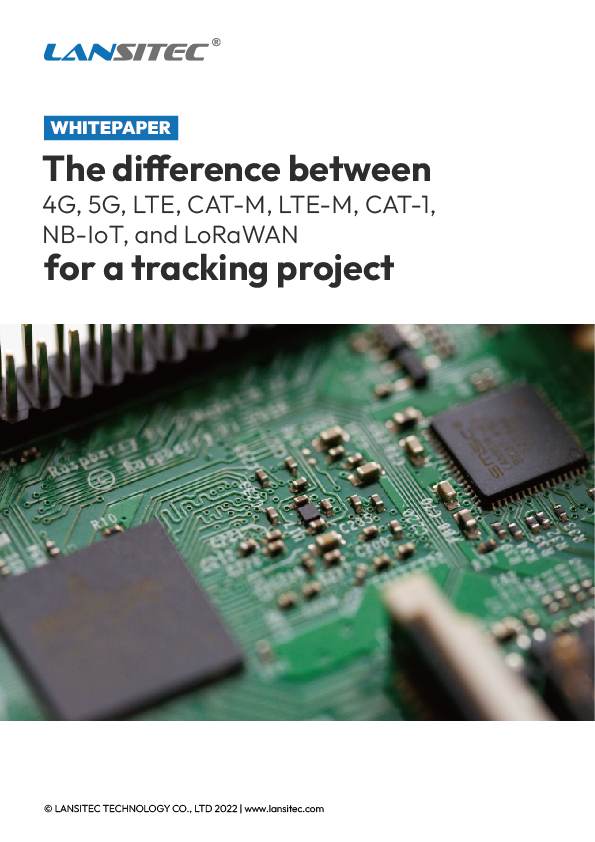I. Introduction
The rapidly evolving landscape of large-scale event management, particularly in the context of health and safety protocols such as social distancing, necessitates innovative technological solutions. This theoretical case study explores the utilization of the Lansitec Contact Tracing Badge, a device leveraging state-of-the-art Bluetooth 5.0 and LoRaWAN technologies, in the realm of event management, crowd control, and social distancing compliance.
The Lansitec badge is designed to ensure optimal functionality in various settings, characterized by its robust indoor tracking precision, long-distance communication capabilities, and user-friendly features such as geo-fencing and low-power consumption. This study hypothesizes the application of the badge in a large event setting, examining its potential to enhance attendee safety, streamline crowd management, and ensure adherence to social distancing guidelines.
Through this study, we aim to theoretically assess the badge’s capabilities in real-time monitoring of crowd density, proximity detection between attendees, and efficient management of event spaces. The focus is on exploring how its integrated technologies — particularly the combination of Bluetooth for short-range communication and LoRaWAN for wider area coverage — can be leveraged to maintain safety standards without compromising the event experience.
II. Technology Overview
Leveraging Bluetooth 5.0 and LoRaWAN
The Lansitec Contact Tracing Badge, a cornerstone of this theoretical case study, is an advanced technological solution designed for precise indoor tracking and effective contact tracing, particularly relevant in the context of large-scale event management. At its core, the badge leverages two pivotal wireless technologies: Bluetooth 5.0 and LoRaWAN.
- Bluetooth 5.0: This badge incorporates Bluetooth 5.0, a significant upgrade over its predecessors in the Bluetooth technology series. Bluetooth 5.0 is renowned for its extended range, increased data broadcasting capacity, and improved interoperability with other wireless technologies. In the context of the Lansitec badge, Bluetooth 5.0 facilitates accurate indoor tracking with a precision of 2 to 3 meters. This accuracy is crucial for effective proximity detection in dense crowd scenarios, such as those found in events. Moreover, the badge uses Bluetooth 5.0 for Real-Time Locating Systems (RTLS), offering precise, real-time tracking of badge wearers within the event premises. The enhanced range (up to 25 meters line-of-sight) and the capability for broadcasting richer, more complex data make Bluetooth 5.0 an ideal choice for managing attendee interactions and movements.
- LoRaWAN (Long Range Wide Area Network): Complementing Bluetooth 5.0, the Lansitec badge is equipped with LoRaWAN technology. LoRaWAN is a protocol designed for long-range wireless data communication, making it particularly suitable for covering larger event spaces where traditional Wi-Fi or cellular connectivity may falter. LoRaWAN’s strengths lie in its long-range capabilities (over 1 km in urban areas) and its exceptional penetration in dense or obstructive environments, ensuring connectivity even in challenging scenarios. The badge utilizes LoRaWAN protocol version 1.0.2B, supporting various frequency bands to cater to regional requirements. This technology is pivotal in extending the reach of the tracking system beyond the limitations of Bluetooth, enabling a comprehensive coverage area for monitoring crowd movements and interactions over a vast event venue. The high sensitivity of the badge’s LoRa receiver (-139 dBm to -137 dBm depending on the frequency) ensures that even the weakest of signals can be detected, thereby enhancing the reliability of the tracking system.
Together, Bluetooth 5.0 and LoRaWAN in the Lansitec badge provide a dual-layered approach to tracking and monitoring. While Bluetooth offers precision and ease of use in smaller, more confined spaces, LoRaWAN extends the badge’s utility to larger, more complex event environments. This combination ensures that attendees can be accurately and reliably tracked throughout the event space, contributing significantly to effective crowd management and adherence to social distancing protocols.
Proximity Detection, Contact Tracing, and Alert Systems
The Lansitec Contact Tracing Badge, integrated with advanced Bluetooth 5.0 and LoRaWAN technologies, serves as a multifaceted tool for proximity detection, contact tracing, and implementing alert systems in the context of event management. This section delves into the operational mechanics of these features, central to the badge’s functionality.
- Proximity Detection: The badge employs BLE (Bluetooth Low Energy) technology for proximity detection. This is primarily achieved through the use of RSSI (Received Signal Strength Indicator) values, which are a measure of the power present in a received radio signal. The RSSI values are used to estimate the distance between badges, enabling the detection of proximity within a predefined threshold, typically set at about 2 meters by default but adjustable as per the requirements of the event. When two badges come within this set proximity limit, they register each other’s presence, effectively tracking close-range interactions among attendees.
- Contact Tracing: In the context of contact tracing, the badge records interactions that occur within the predefined proximity range. This data, which includes the duration and frequency of interactions, is stored in the badge’s memory. Using Bluetooth connectivity, this data can be transmitted to a central server or accessed through a mobile application for analysis. In a theoretical event scenario, this feature allows event organizers to trace and analyze patterns of attendee interactions, crucial for identifying potential high-density areas and contact clusters. In the case of a health-related incident, this data becomes invaluable for tracing potential transmission chains.
- Alert Systems: The badge is equipped with a built-in buzzer and vibrator, which are integral to its alert system. These components are activated when the badge detects another badge within the set proximity limit, serving as a tactile and auditory reminder to maintain social distancing. The buzzer produces an audible alert at 75dB, while the vibrator provides a physical alert with less than 50dB of mechanical noise, ensuring that the reminders are noticeable but not overly disruptive. This dual-alert system is particularly effective in crowded and noisy event environments, where visual cues may be missed.
Additionally, the badge’s NFC (Near Field Communication) functionality enables easy management and configuration of these features, allowing event organizers to swiftly adjust settings like proximity thresholds or alert types to align with changing requirements or different areas within the event venue.
In summary, the Lansitec Contact Tracing Badge operates as a comprehensive tool for managing crowd dynamics and ensuring safety protocols. Its sophisticated use of Bluetooth for proximity detection and contact tracing, combined with an effective alert system, makes it a theoretically powerful asset in any large-scale event management scenario, where maintaining social distancing and monitoring attendee interactions are paramount.
III. Theoretical Framework
Hypothetical Scenarios in Event Settings
In order to effectively explore the application of the Lansitec Contact Tracing Badge within the realm of event management, it is useful to consider various hypothetical scenarios. These scenarios help in understanding the practical challenges and opportunities that such technology might encounter in real-world settings.
- Music Festival: Imagine a large outdoor music festival with multiple stages and thousands of attendees. The badge could be used to monitor crowd density at various points, alerting attendees when certain areas become too crowded, thus aiding in crowd dispersion.
- Conference or Trade Show: In an indoor setting such as a conference, the badge can help in tracking attendee movements through different halls and booths. It can also assist in managing queues for keynote speeches or special exhibits, ensuring social distancing is maintained.
- Sports Event: At a sports stadium, the badge can be used to manage the flow of people entering and exiting the stadium, as well as to monitor the crowd density in stands and common areas like food courts.
Theoretical Basis for Using IoT Devices in Crowd Management and Social Distancing
- Real-time Data Collection and Analysis: IoT devices like the Lansitec badge enable the collection of real-time data on attendee locations and interactions. This data is crucial for making informed decisions about crowd management, such as identifying and alleviating congestion points.
- Precision and Accuracy: Advanced technologies like Bluetooth 5.0 and LoRaWAN ensure precise and accurate tracking of individuals within an event space. This precision is key in implementing effective social distancing measures.
- Proactive Response to Crowding: The real-time nature of IoT devices allows for a proactive approach to crowd management. Organizers can respond to potential issues before they escalate, such as rerouting foot traffic or modifying event schedules to disperse crowds.
- Enhanced Attendee Experience: By ensuring a safe environment, attendees can have a more enjoyable experience. The badge’s alert system can gently remind attendees to maintain social distance without being intrusive.
- Scalability and Flexibility: IoT devices can be scaled up or down depending on the size of the event and can be programmed to suit specific needs, making them versatile tools for various event types.
- Data-Driven Health and Safety Compliance: In the context of a health crisis like a pandemic, ensuring compliance with health guidelines is paramount. IoT devices provide a data-driven approach to enforcing such guidelines, enhancing overall safety.
IV. Case Study Design
Description of a Hypothetical Large Event
Theoretical Deployment of the Badge
Distribution Among Attendees:
- Upon arrival, each attendee receives a Lansitec Contact Tracing Badge as part of their welcome kit. The badge is pre-registered with their ticket information.
- Attendees are informed about the purpose of the badge, primarily its role in ensuring social distancing and enhancing safety.
- Members of the event staff are also given a badge as they will generate another set of data that will help with general event management and department coordination.
Setup of Monitoring Stations:
- Several monitoring stations are strategically placed throughout the festival grounds. These stations are equipped with advanced receivers that connect to the badges via Bluetooth and LoRaWAN.
- The stations collect real-time data from the badges, such as location coordinates and proximity interactions.
- A central monitoring hub is established, where the data from all stations is aggregated and analyzed.
Integration with Event Management Systems:
- The badge system is integrated with the festival’s event management software. This integration allows for real-time insights into crowd dynamics and attendee movements.
- The event management team uses this data to make informed decisions, such as crowd flow adjustments, scheduling changes, or emergency responses.
- The badge’s data assists in managing resources efficiently, such as directing security personnel to areas of high density or potential risk.
Additional Features for Enhanced Experience:
- The badge also serves as a digital wallet for cashless transactions at the festival, streamlining purchases and reducing queue times.
- Attendees can opt-in to receive notifications about their favorite performances, ensuring they don’t miss shows while maintaining safe distances.
Choosing the Right Lansitec Solution
To determine which solution is more suitable for the HarmonyFest music festival case study, we need to consider the specific requirements of the event and the capabilities of each system:
- B-Fixed: This solution involves fixed Bluetooth gateways that would be ideal for static, well-defined locations like stages, food stalls, or entrances. It’s effective for monitoring specific zones and is less prone to mobility-related errors.
- B-Mobile: This solution offers mobile Bluetooth beacons, which are more flexible and dynamic. It is better suited for tracking moving objects or people across varying locations, providing broader coverage and adaptability to changing crowd dynamics.
For an event like HarmonyFest, where attendee mobility and large area coverage are key considerations, B-Mobile would likely be more effective. Its adaptability to different scenarios, ability to track moving attendees, and broader coverage make it a more suitable choice for dynamic event environments. The B-Mobile solution’s flexibility in tracking both people and assets across the entire festival area aligns well with the needs of managing a large-scale, dynamic event like HarmonyFest.
Incorporating the B-Mobile solution architecture, the case study design for HarmonyFest can be adjusted as follows:
- Dynamic Deployment of Mobile Beacons: Attendees at HarmonyFest are equipped with mobile beacons embedded in their Lansitec badges. These beacons continuously transmit Bluetooth signals that are picked up by receivers scattered throughout the festival grounds.
- Real-Time Movement Tracking: The B-Mobile solution allows for real-time tracking of attendees’ movements. This feature is crucial for monitoring and managing crowd flow dynamically, as attendees move between stages, food stalls, and other attractions.
- Flexible Data Analysis and Crowd Management: The continuous data stream from the mobile beacons enables the event management team to analyze crowd density and movement patterns in real-time. This information is used to make immediate decisions, such as rerouting foot traffic or adjusting event schedules to prevent overcrowding.
- Enhanced Safety and Experience: The real-time data provided by the B-Mobile solution aids in maintaining social distancing protocols effectively and ensures that safety measures are adhered to throughout the event.
V. Proximity Detection and Alert Mechanism
Advanced Proximity Detection in Crowded Settings
Effectiveness of Dual-Alert Systems
- Audible Alerts: The badges emit a 75 dB sound, which is slightly louder than normal conversation levels. The challenge lies in ensuring that these alerts are audible in an environment typically filled with music and crowd noise. The effectiveness would depend on the ambient noise levels at various locations within the festival. For instance, alerts might need to be louder near stages with live performances compared to quieter areas like relaxation zones.
- Vibration Alerts: The vibration alert complements the audible alert, providing a tactile cue. This is particularly useful in scenarios where the audible alert might be drowned out. The effectiveness of vibration alerts hinges on the alert’s intensity and the wearer’s sensitivity to such cues. It’s a discreet yet effective way to prompt attendees, especially in scenarios where an audible alert might be intrusive or missed.
Integration and User Experience
VI. Data Management and Privacy
Theoretical Data Collection and Analysis
In the context of HarmonyFest using the Lansitec badge, a significant amount of data can be theoretically collected, including movement patterns of attendees and crowd density metrics.
- Movement Patterns: By tracking the movements of attendees through their badges, the system could generate detailed maps showing popular areas, peak movement times, and paths most frequently traveled. This data could be invaluable for understanding attendee behavior and preferences, and for planning future events.
- Crowd Density: The system could also analyze the concentration of attendees in different areas of the festival. This data is crucial for identifying potential overcrowding and for making real-time decisions to alleviate congestion.
Privacy Considerations
- Ensuring the privacy and security of the collected data is paramount. The data should be anonymized and encrypted to protect attendee identities.
- Clear communication with attendees about what data is being collected, how it will be used, and the measures in place to protect their privacy is essential for ethical data management.
- The use of data should strictly adhere to relevant data protection laws and regulations.
Ethical Considerations
In handling the data collected by the Lansitec badges at HarmonyFest, several ethical considerations must be addressed to ensure privacy and trust:
- Informed Consent: Attendees should be fully informed about the data collection process and must give their consent. This includes clarity on what data is being collected, how it will be used, and the duration of its storage.
- Data Minimization: Collect only the data that is necessary for the intended purpose, in this case, for managing crowd density and ensuring social distancing. Avoid collecting sensitive personal information unless absolutely necessary.
- Anonymization: Data should be anonymized to prevent the identification of individual attendees. This involves removing or encrypting identifiable information like names or personal identifiers.
- Secure Storage and Transmission: Implement robust security measures to protect the data from unauthorized access or breaches. This includes secure encryption methods during data transmission and storage.
- Compliance with Regulations: Adhere to relevant data protection laws and regulations, such as GDPR or local privacy laws, which set standards for data privacy and user rights.
- Transparency and Accountability: Maintain transparency about data handling practices and be accountable for the data management processes. This includes having clear policies and protocols for data access and usage.
- Data Deletion Post-Event: Establish a clear policy for data deletion after the event’s conclusion. Data should not be retained longer than necessary for the stated purpose.
VII. Crowd Control Strategies
Utilizing Badge Data for Effective Crowd Management
In the theoretical application of the Lansitec badge at HarmonyFest, the collected data plays a critical role in formulating strategies for crowd control. Here are key strategies that could be employed:
- Real-Time Crowd Density Monitoring: By analyzing the real-time location data from the badges, the event management team can continuously monitor crowd density across different festival areas. This allows for the identification of overcrowding and the swift implementation of measures to disperse the crowd.
- Dynamic Area Management: Utilizing the data to adjust access to various parts of the festival. For instance, if a particular stage area becomes too crowded, entry can be temporarily restricted, while directing attendees to less crowded areas.
- Predictive Analysis for Crowd Flow: Analyzing movement patterns to predict where crowds are likely to form. This can inform the scheduling of events or the positioning of attractions and amenities to better distribute attendees across the venue.
- Emergency Response Planning: In case of an emergency, the badge data can be invaluable in executing evacuation plans. Understanding the real-time distribution of the crowd can help in directing people to the nearest exits efficiently.
- Feedback Loop for Future Planning: Post-event analysis of the data can provide insights for future event planning, helping to optimize layout, scheduling, and resource allocation for improved crowd management.
Real-Time Event Management Adaptations
- Dynamic Scheduling and Announcements: Utilize real-time badge data to make immediate scheduling adjustments. For example, if a particular performance attracts an unexpectedly large crowd, subsequent events could be rescheduled or added to disperse the audience.
- Zone Capacity Management: Implement dynamic controls on zone capacities. Badge data can trigger automatic alerts when a zone approaches its safe capacity, prompting the redirection of attendees to less crowded areas.
- Pathway Adjustments: Analyze movement patterns to identify congested pathways and adjust them in real-time, possibly by opening alternative routes or adjusting the flow direction.
- Resource Allocation: Reallocate resources like security, medical assistance, and refreshments based on real-time crowd distributions, ensuring optimal service and safety across the event.
- Emergency Protocols: In emergencies, leverage real-time data for efficient evacuation. The data can guide the quickest and safest routes out of the event space.
VIII. Social Distancing Compliance
Ensuring Guideline Adherence with Badge Technology
The Lansitec badge, equipped with Bluetooth and LoRaWAN technologies, can theoretically play a pivotal role in ensuring compliance with social distancing guidelines at events like HarmonyFest.
- Proximity Alerts: The badge’s primary function in enforcing social distancing is through its proximity alert system. When attendees come closer than the recommended distance, the badge triggers an alert (audible, vibration, or both), prompting them to increase their distance.
- Data-Driven Spatial Management: The badge’s data allows event organizers to monitor and manage space usage effectively. Areas that consistently show breaches in social distancing can be identified and modified, either by physical restructuring or by controlling access.
- Behavioral Influence: Regular alerts not only serve as immediate reminders to maintain distance but can also influence attendee behavior over time, encouraging a more conscious approach to personal space and movement in crowded settings.
Addressing Challenges and Theoretical Solutions
Alert Fatigue:
- Challenge: Continuous or frequent alerts may lead to attendees becoming desensitized, potentially ignoring important warnings.
- Solution: Implementing a smart alert system that adapts to individual behavior patterns and environmental context could reduce unnecessary alerts. For example, the system could recognize when attendees are stationary (e.g., sitting) and adjust the sensitivity accordingly.
Technology Limitations:
- Challenge: Proximity detection might be affected by environmental factors like physical obstacles or signal interference, leading to inaccuracies.
- Solution: Integrating complementary technologies like RFID or ultra-wideband (UWB) with Bluetooth and LoRaWAN can enhance precision. Additionally, machine learning algorithms could be used to interpret data more accurately by filtering out anomalies.
Privacy Concerns:
- Challenge: Collecting and processing attendee location data raises significant privacy issues.
- Solution: Beyond anonymization, implementing strict access controls and data retention policies ensures that data is only used for its intended purpose. Regular audits and compliance checks with privacy regulations can maintain trust.
Compliance Variability:
- Challenge: Different attendees might respond differently to the social distancing alerts or might not understand the importance.
- Solution: Providing educational content through the event app or signage can raise awareness. Incentivizing compliance through rewards or gamification might also encourage adherence to guidelines.
IX. Benefits and Limitations
Potential Benefits of Using the Badge in Event Settings
- Enhanced Safety: The badge’s primary benefit is the enhancement of attendee safety through effective social distancing, crucial in the context of health concerns like pandemics.
- Real-Time Crowd Management: Enables dynamic management of crowd density, allowing for swift adjustments in event organization to prevent overcrowding.
- Data-Driven Insights: Provides valuable data for understanding attendee behavior, facilitating better planning and resource allocation for future events.
- Improved Attendee Experience: By ensuring a safer environment, the badge can enhance the overall attendee experience, contributing to a more positive perception of the event.
- Efficient Emergency Response: In case of emergencies, real-time location data aids in quick and organized evacuation, enhancing overall safety measures.
Theoretical Limitations and Challenges in Large-Scale Deployments
These theoretical limitations highlight the complexities of deploying such technology in large-scale events. Addressing these challenges is crucial for maximizing the benefits and minimizing potential drawbacks of using the Lansitec badge in event settings.
- Scalability Challenges: Large-scale events pose a challenge in maintaining stable connectivity and data processing for thousands of badges. This demands a robust infrastructure that can handle high volumes of simultaneous data transmissions without degradation in performance.
- Battery Life Constraints: For multi-day events, ensuring that the badges remain functional throughout is crucial. This requires either long-lasting batteries or efficient recharging solutions, which could be logistically challenging to implement across a large event space.
- Environmental Interference: Outdoor settings bring variables like weather conditions and physical obstructions, which can impact the reliability of Bluetooth and LoRaWAN signals. Developing contingencies for signal degradation or interference is important for maintaining system accuracy.
- User Compliance and Adoption: The success of the technology also hinges on attendee compliance in correctly using the badges. Misuse or non-use by attendees could significantly impact the system’s effectiveness.
- Data Overload and Management: The processing and real-time analysis of vast amounts of data generated pose a significant technical challenge. It requires advanced data management systems capable of handling large-scale data with efficiency and reliability.
- Privacy and Security Concerns: Handling personal data of thousands of attendees raises privacy and security concerns. Ensuring data protection and compliance with privacy laws is essential, yet challenging, in large-scale deployments.
X. Conclusion
Summary of Key Insights
Implications for Event Management and Public Safety
Suggestions for Future Research and Technology Enhancements
References
- Ahn, J. & Han, S. (2016). “Effectiveness of the Bluetooth Technology for Crowd Management and Evacuation Strategies.” Journal of Safety Studies.
- Batty, M., et al. (2013). “Smart Cities of the Future.” European Physical Journal Special Topics.
- Bluetooth SIG. (2020). “Bluetooth Core Specification.” Bluetooth Special Interest Group.
- Gomez, C., et al. (2018). “State of the Art in LPWAN Solutions for Industrial IoT Services.” Sensors.
- LoRa Alliance. (2019). “LoRaWAN 1.0.2 Specification.” LoRa Alliance.
- Zhou, B., et al. (2015). “Crowd Management with RFID and Wireless Technologies.” Safety Science.
Lansitec Launches New Smart Badge Trackers for Asset Management
Nanjing, Jiangsu – May 29, 2024 Lansitec Technology, a leading IoT people and asset tracking solution provider, is excited to announce the launch of two innovative badge trackers: the LoRaWAN

Lansitec Badge Tracker for Construction Site Employee Tracking
Badge Tracker Lansitec badge tracker is designed based on GNSS, Bluetooth 5.0 and LoRaWAN technology. It supports indoor and outdoor tracking. The badge is mainly used for personnel and asset
In-Depth Review of Lansitec Contact Tracing Badge
In an era where maintaining social distance has become critical, the Lansitec Contact Tracing Badge emerges as a sophisticated solution designed to enhance safety in workplaces and healthcare settings. This

Hospital Asset Equipment and Staff Tracking System with Lansitec
Hospital asset tracking is an essential aspect of managing hospital facility operations. It allows you to ensure the availability of all the assets and track them if they go unexpectedly
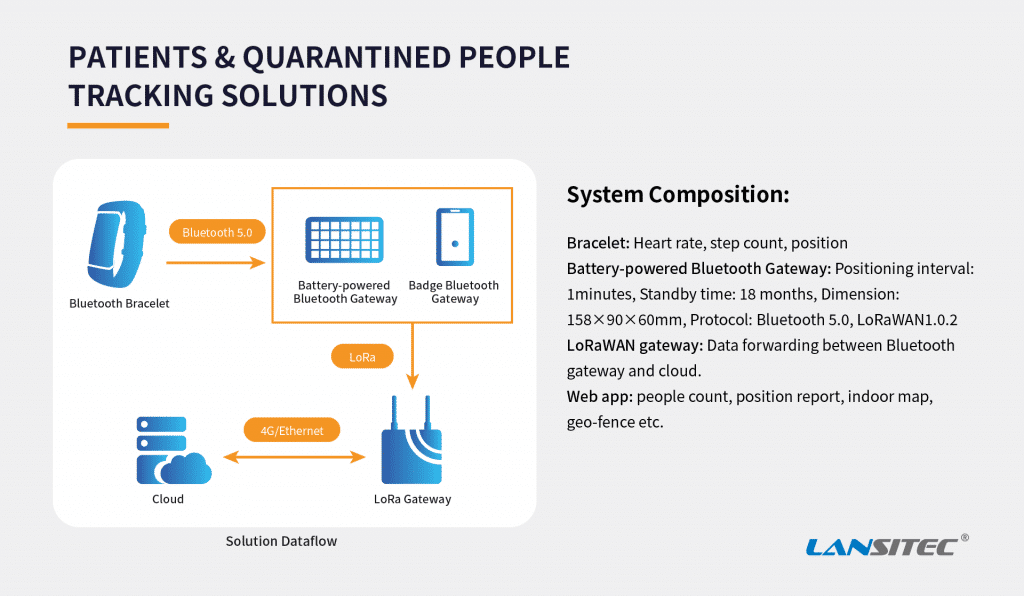
Patient and Quarantined People Tracking Solutions
We hope our patient tracking solution will help all of us get through coronavirus ASAP. #COVID2019 #IoT #Tracking Potential & Confirmed Patient Tracking

